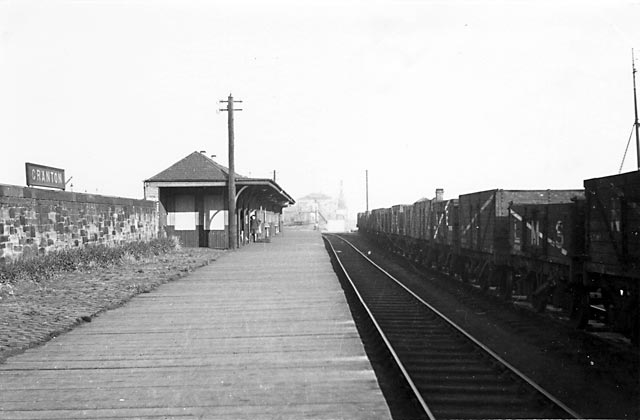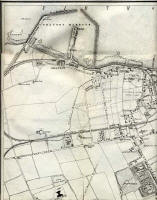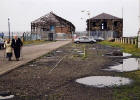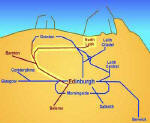|
Edinburgh Transport - Railways Granton Station |
Granton Station
© For permission to reproduce, please contact peter.stubbs@edinphoto.org.uk Photographer and date of photo not known
|
Granton Station |
|
|
Question Here is a photo of a line of LMS wagons at Granton Station. - When was this photograph taken? - Is this the station that was close to the Custom House at Granton Square? If you know the answers to these questions, please email me |
|
|
Answer - 1 Thank you to Patrick Hutton of Edinburgh for emailing me within a couple of days of this photo being added to the site. Patrick wrote:
|
|
|
Answer - 2 Thank you to Walter Hume for the comments and recollections below:
|
|
|
Answer - 3 Thank you to Douglas Beath, Tasmania, for the comments below:
|
|
|
Further Comments continued Please click on the map below to see the position of the station on Middle Pier in 1870 (near the top of the map): 1870 Please click on the picture below to see a view in 2002, looking north along Middle Pier from beside the slipway at the Royal Forth Yacht Club on Middle Pier. This is about where the far end of the platform would have stood. 2002 There is now no longer any evidence of the station, but some of the old railway track leading north from the station towards the derelict buildings can still be found. No doubt it will soon be lifted as part of the Edinburgh Waterfront development. The old railway track is not apparent in the photograph above, but it can be clearly seen in this photo: 2002 [Peter Stubbs: 10 November 2004] |
|
Granton Road Station |
|
Granton Road Station was on the railway line that ran from Princes Street Station to Craigleith, East Pilton, Granton Road, Newhaven and North Leith. It is now one of many lines in North Edinburgh that have been converted into a cycle track and walkway. |
|
TRANSPORT |
|||||||
| Full Index |
Bus Tickets |
Railway Tickets |
|||||




